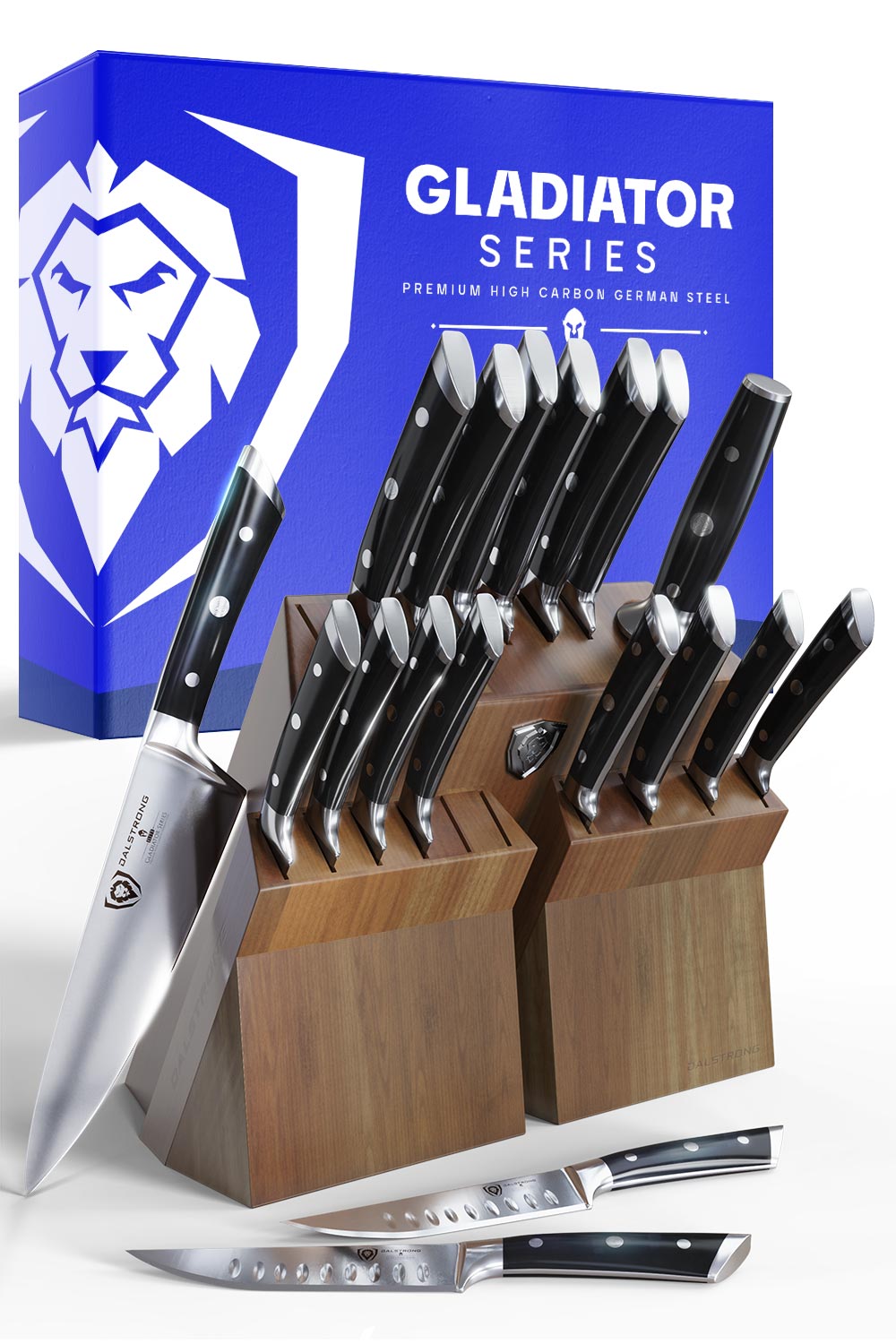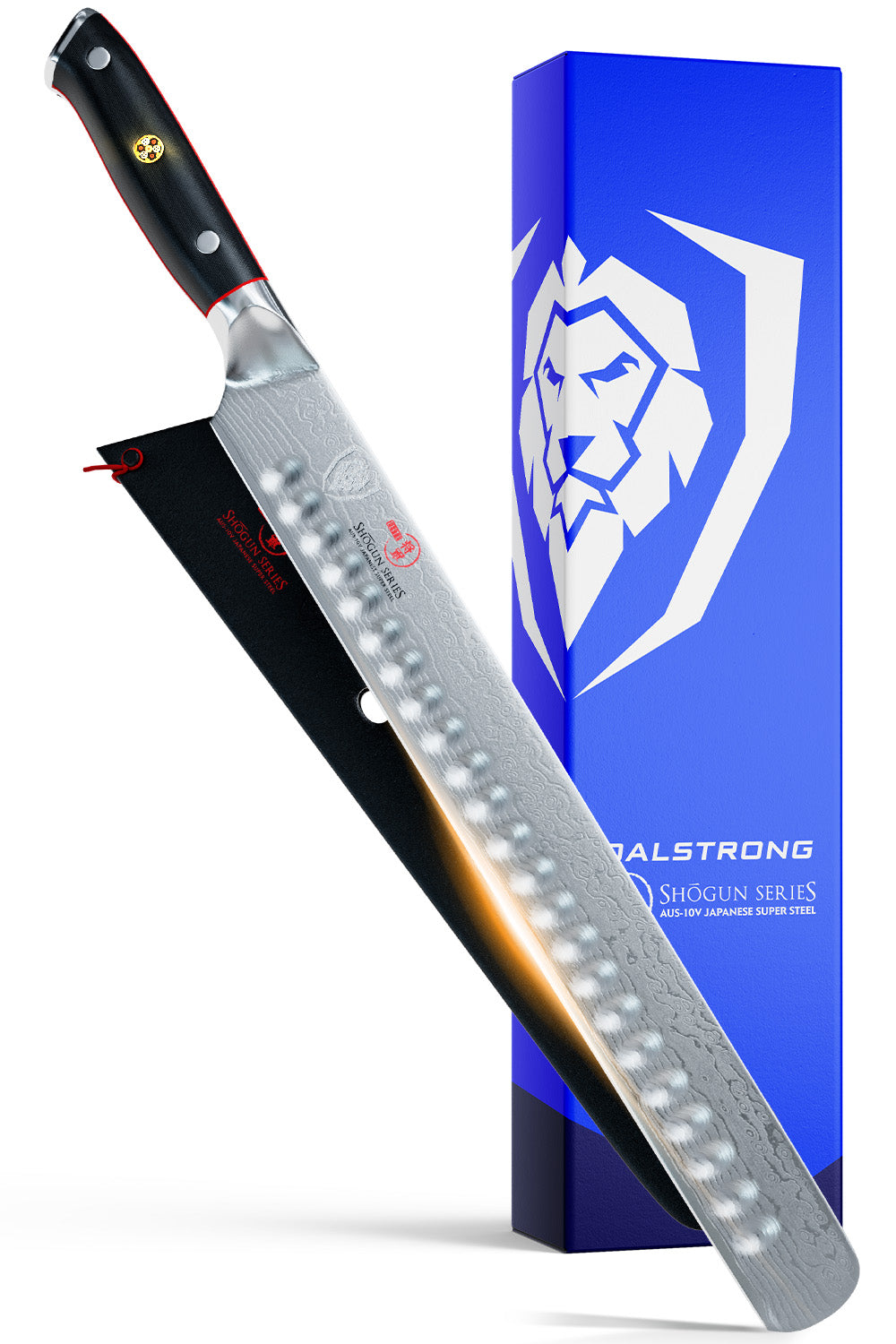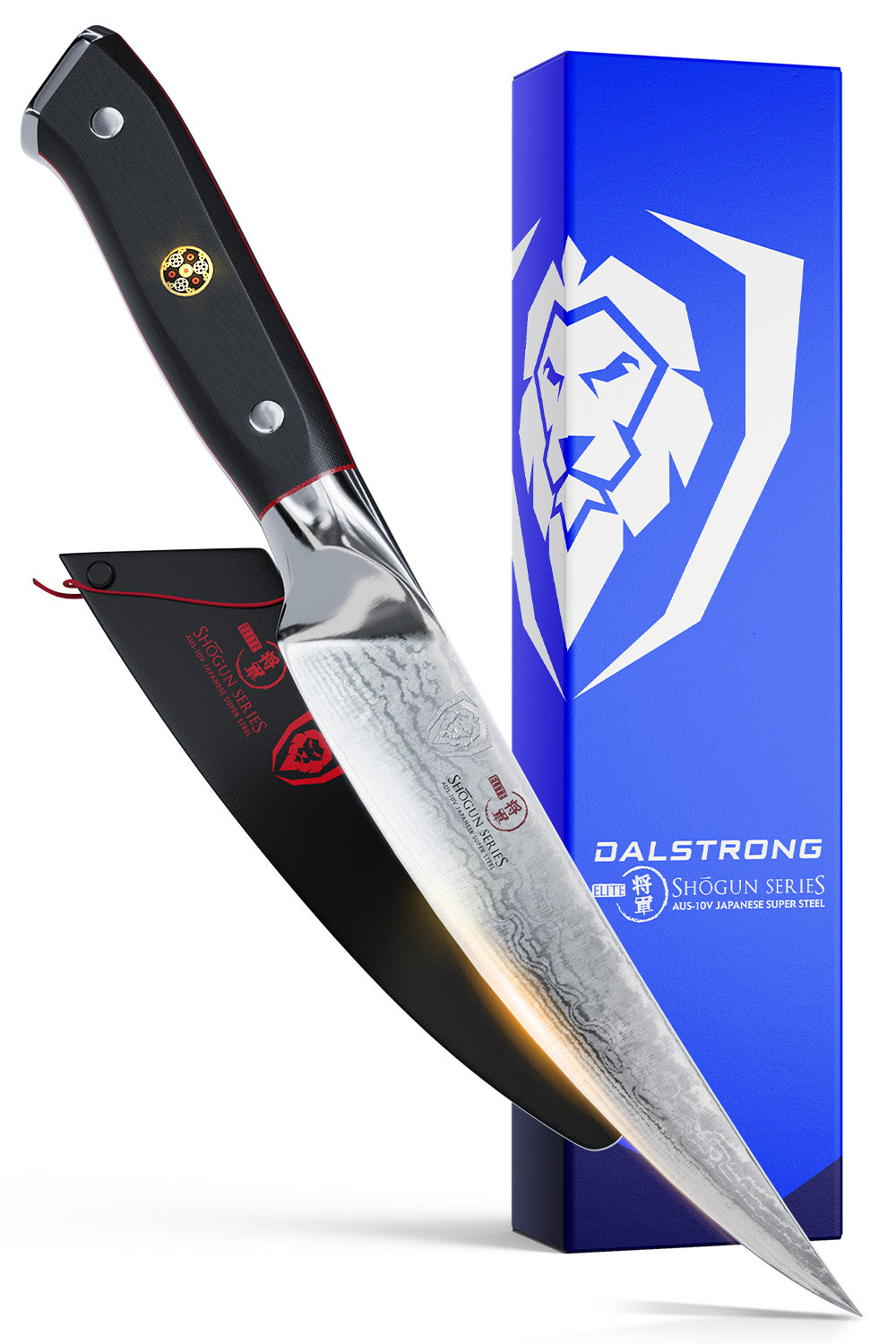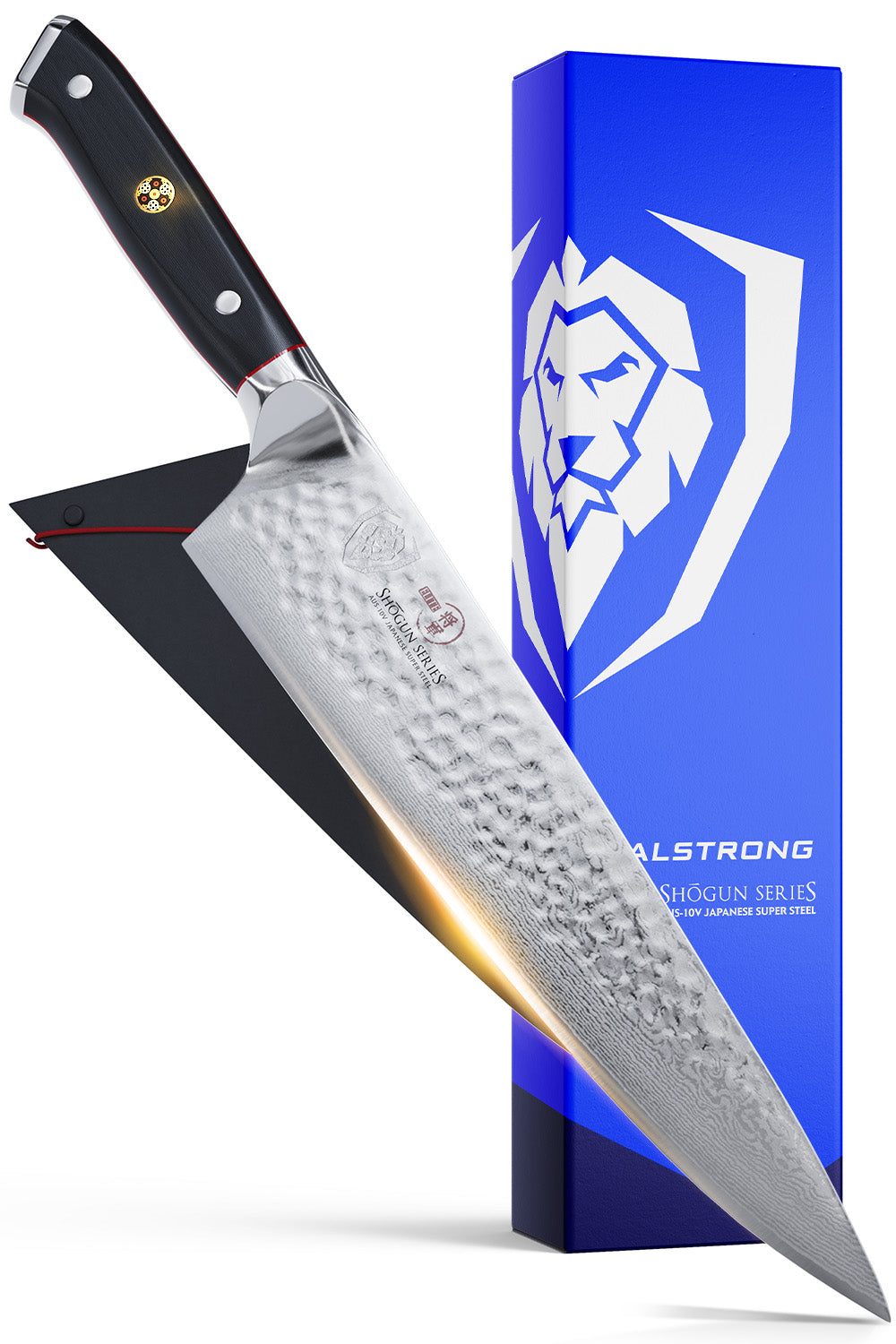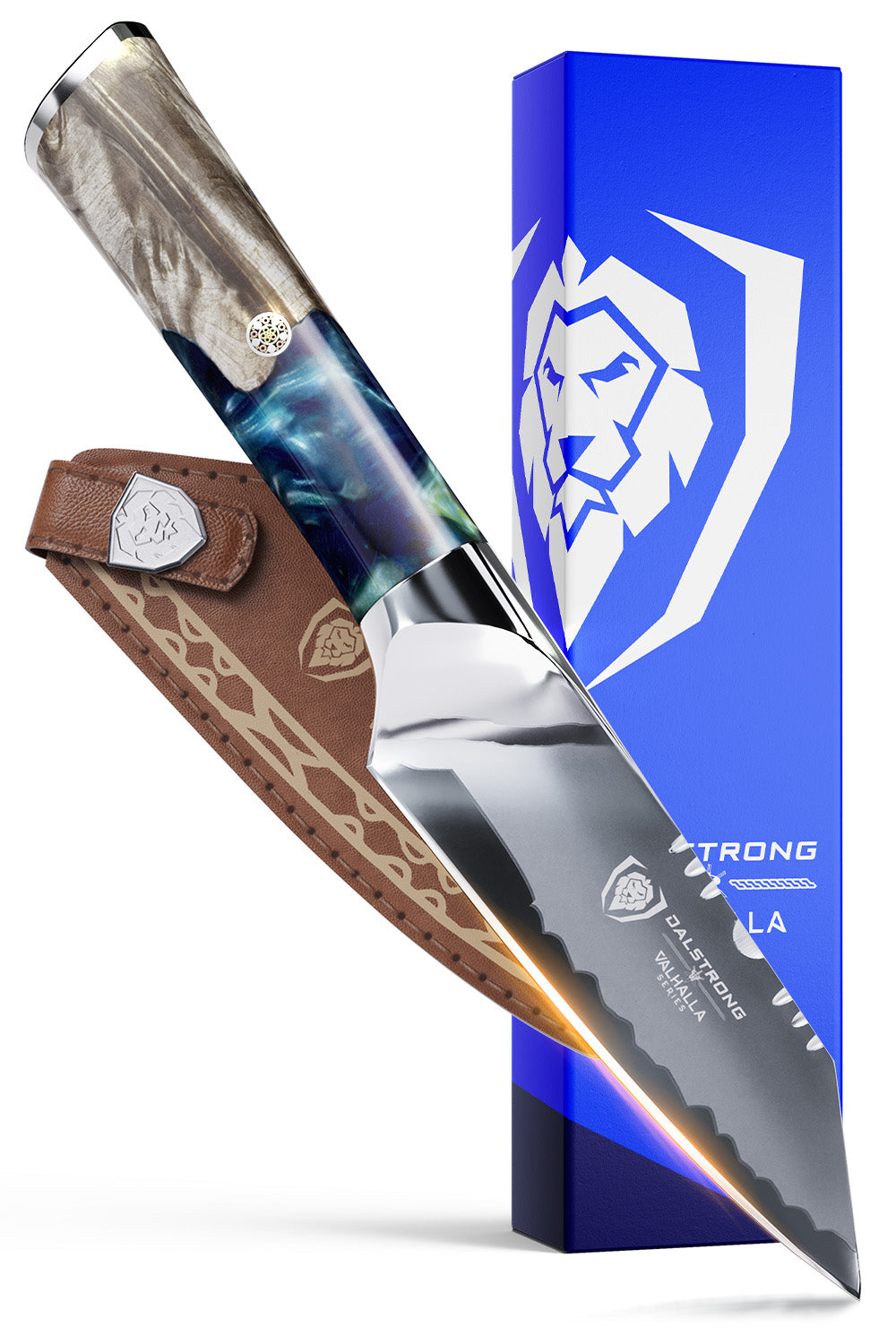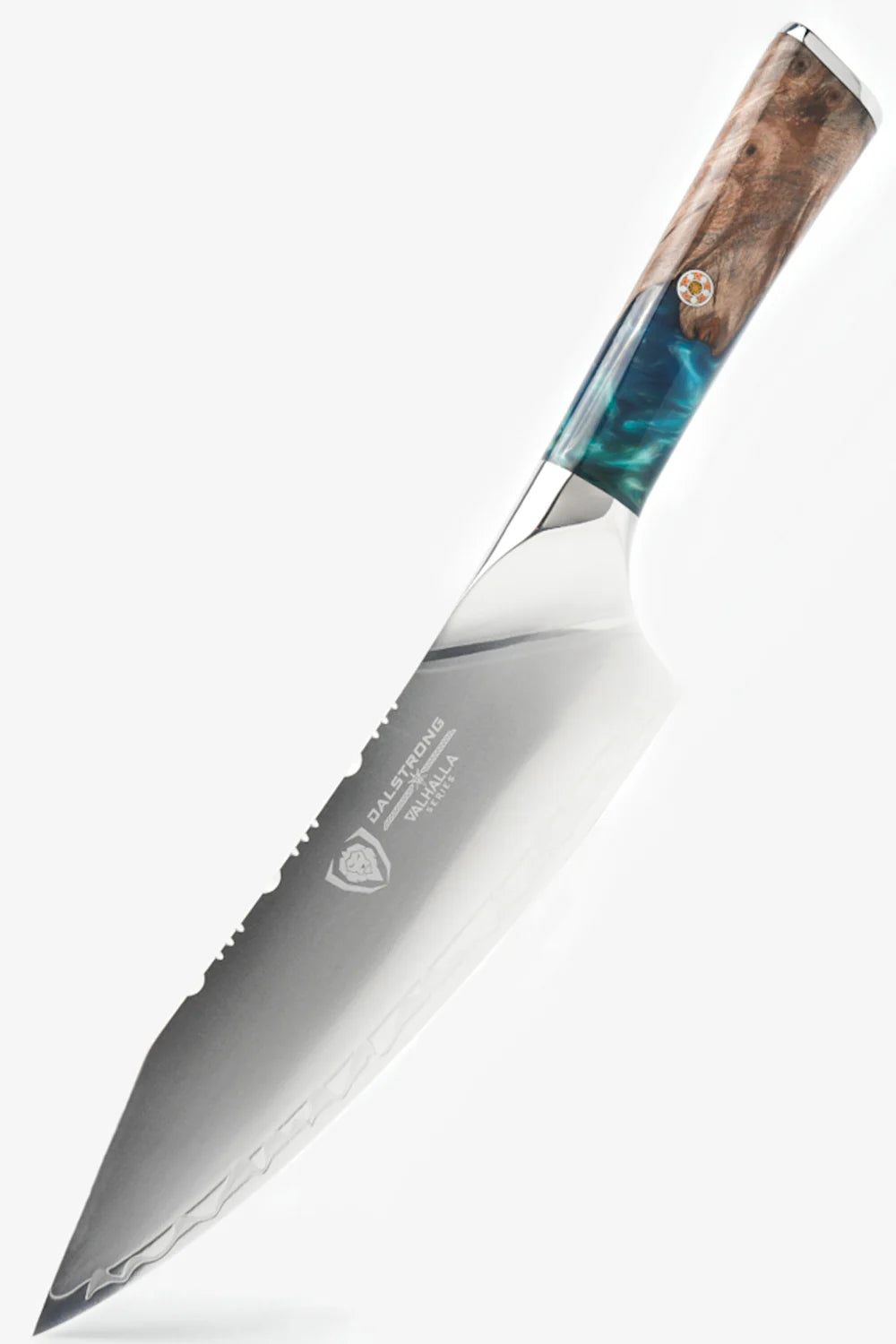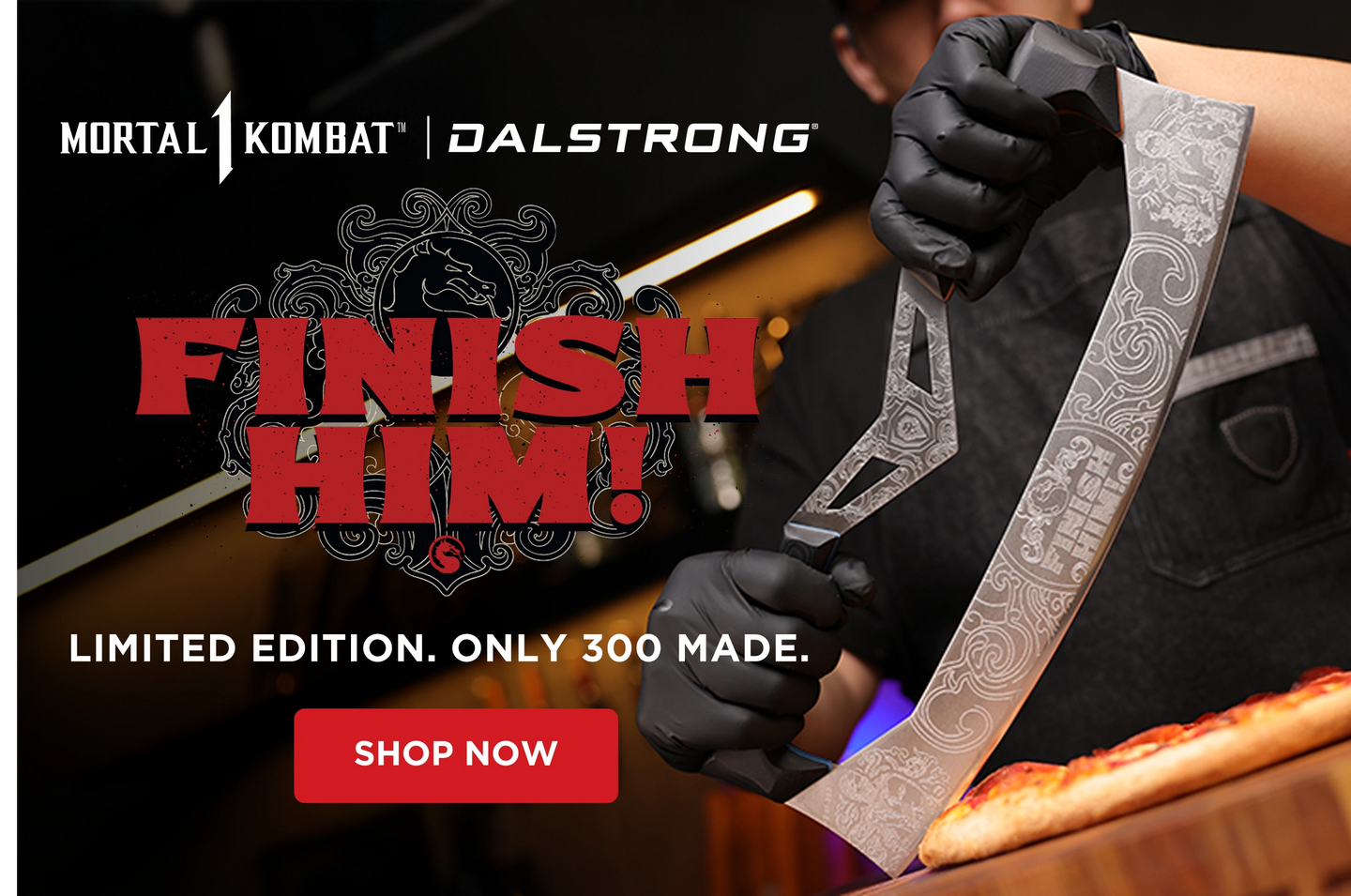Teak Wooden Cutting Board | Dalstrong ©
What Is The Best Wood For Cutting Boards?
- Teak: beautiful, strong and durable.
- Maple: versatile, affordable and reliable.
- Beech: hard, resistant, easy to maintain.
- Walnut: dense, dark.
Needless to clarify, a cutting board is on the “essentials” section of kitchen utensils. It’s likely you will use one every day at home, or almost every day. And if we’re talking about a professional kitchen, then we’re talking about a heavy-duty, several-times-a-day thing.
But not every cutting board will live up to that challenge. A good cutting board will bring peace to a kitchen: it will ensure hygiene and order, it will guarantee food safety, it will protect your hands and fingers, it will make cooking easier and it will look beautiful on your countertop. It will also help your knives last longer by protecting their cutting edge.
Professional kitchens know that a wooden cutting board is the best option available. This definitely applies to small kitchens and households too. But don’t just take our word for it, read on to find out why wood is the ultimate cutting board material.
1. Why Is Wood Better Than Other Cutting Board Materials?
8'' Bread Knife | Frost Fire Series | Dalstrong ©
In professional kitchens, it is widely accepted that wood cutting boards are the best option when choosing a cutting surface, well above bamboo, plastic, and others. But why? What is it that makes wooden boards superior to other materials?
- Wooden chopping boards are hygienic and antimicrobial, offering food safety. This is because the cellulose that is naturally present in wood will actively destroy bacteria on the surface and fibers.
- They work great for all types of foods, from bread to meat.
- A wooden chopping board is highly durable and can almost last a lifetime when properly maintained.
- Wood will endure heavy, everyday use, even in the busiest kitchen.
- This material is friendlier to the edge of your knives than others.
- Cutting boards made of wood are heat resistant so you can rest pots and pans on them.
- Wood cutting boards are beautiful, with a unique elegance that never goes out of style.
- They are available in different woods (maple, beech, birch, teak, walnut, pine) as well as finishes, shapes, and prices.
Wooden Cutting Boards vs. Plastic Cutting Boards
The thing about plastic cutting boards is that, unlike wood, they cannot guarantee an appropriate level of food safety. The surface of plastic boards is easily scratched while doing cutting work, and bacteria is likely to proliferate in these grooves.
Plastic boards are also not as durable and lose their charm and quality rather quickly. No one wants to spend their year buying plastic boards over and over.
Another thing that wood can offer, that plastic can’t, is sturdiness. After all, you will be using a sharp knife, close to your fingers, and any movement can cause the chopping board to move suddenly and cause an injury (Exaggerated? Maybe, but absolutely possible).
Wood vs. Bamboo (and glass, and ceramic…)
To be honest, a bamboo cutting board is a noble choice. They are environmentally friendly, and a high-quality bamboo board can also offer food safety and hygiene. The bad news is, a bamboo surface is harder and dulls knife blades. This also applies to other options for cutting boards such as glass and ceramic. So, even if for selfish reasons, wood is still the best option.
2. End Grain vs. Edge Grain
We should explain that wood chopping boards come in two main types of wood grain: end grain and edge grain.
Edge grain cutting boards are the most traditional. This type of wood grain is made by arranging and fixing together the edge of several strips of wood. Because hardwoods like maple or cherry are used for edge grain boards, the patterns on the surface are usually very charming.
But scratches and cut marks look kind of obvious on the surface of the edge grain.
On the other hand, if wooden boards are the best; endgrain cutting boards are the best among the best. They are made by vertically assembling the end of several short pieces of wood. As a result, end grain boards show a checkerboard pattern on their surface, sometimes even the tree’s growth rings.
One wonderful feature about end grain cutting boards is they have the “self-healing” superpower, meaning the wood fibers will close up again after being cut by a knife. They are kinder on the edge of your knife too, protecting their sharpness for longer.
3. Hardwood Vs. Softwood
A given type of wood can be harder or softer, and this will definitely influence how good they are as materials for cutting boards and other applications. Softwoods include hickory, cedar, pine, and redwood. Hardwoods include teak, cherry, maple, walnut, and bamboo.
The hardness level in wood is measured by the Janka hardness scale, invented by Austrian dendrologist Gabriel Janka in 1906. The measurement unit is pounds of force or “lbf”. The lower the number, the softer the wood (for example, balsa wood is the softer with 22, while buloka wood is super hard at +5000).
A type of wood that is too hard will dull your knife, but softwood will be easily damaged and scratched. The best woods for cutting boards are between 900 and 1500 on the Janka hardness rating.
4. Best Woods For Cutting Boards
Teak
Teak is highly resistant to bacteria, moisture and stains (no wonder it’s been a historical favorite for boats and furniture) thanks to the closed grain. As a cutting board material is highly resistant and undeniably beautiful.
Teak is also able to retain natural oils better and longer than other woods like maple or walnut, and it doesn’t need as much regular oiling or conditioning as cutting boards made of these other materials.
With around 1000 lbf in the Janka hardness test, the silica content in teak makes it hard enough to be sturdy and resistant, but not so hard that it will make your knife dull.
Teak cutting boards show a brown or orange color and this wood is grown in Southeast Asia.
Maple
Probably the most common material in wooden cutting boards. Rated 1,450 lbf on the Janka test, a maple cutting board offers the ideal combination of surface hardness and kindness to your kitchen knives. The small pores in maple also prevent bacteria from growing on the surface.
On the downside, maple cutting boards are lighter in color than other woods, so stains are a bit more obvious… Other than that, they’re easy to clean and maintain.
Beech
Another standard option in the cutting board business, beech offers food safety, 1300 lbf hardness and a fair level of impact resistance (it also resists scratches, stains and moisture).
Beech is relatively affordable but it will require more maintenance and effort from you: because it shrinks easily, it needs conditioning every month; and, because it’s lighter in color, you will need to be extra careful with food stains.
Walnut
With a hardness rating of 1,010 lbf, walnut is the softer among the cutting board hardwoods. While the cutting edge of your knife is completely safe with a walnut cutting board; denting, warping or scratching is more likely to occur.
Walnut is still food-safe, and will not need as much conditioning as others on this list.
Arguably, walnut’s biggest appeal is its darker tones, which is definitely an advantage for heavy use and busy kitchens.
5. Woods To Avoid In Cutting Boards
When speaking of wood for your cutting board, there are three characteristics that you should avoid: softness, porosity, and toxicity.
Soft woods will quickly develop cut marks all over the surface. Stains too. This is not only a visual turnoff; it also compromises hygiene in food and in the kitchen environment. Soft woods to avoid include balsa, cedar, juniper pine, redwood and spruce.
Porous woods are also a no-go. High porosity means food smells, stains, mold, and bacteria will build up on the surface of your cutting board and live there forever. Porous woods include mahogany, butternut, oak and ash.
Toxic woods are a compromise to your health. There are certain wood types with dangerous toxicity levels and should not come in contact with food or used for any culinary utensils. There are several toxic woods, including pine, birch and mahogany. If you stick to wood coming from a tree that produces edible fruits, you should be safe.
6. Cutting Boards And Food Hygiene
All cutting boards, regardless of the materials from which they are made, need to be constantly supervised to ensure hygiene and safety. Here are some important points:
- Cross-contamination: foods like raw meat contain bacteria (meant to be eliminated later during the cooking process) which could contaminate other types of food like bread or fresh fruits and vegetables. To avoid this, it is advisable to use different cutting boards for each. A non porous surface like a wood cutting board is better for raw meat, poultry and seafood.
- Cleaning: wash cutting boards with warm or hot soapy water after every use. It is important not to let food juices and liquids rest on the wooden surface for too long (especially true with the liquids coming from raw meat)
- Sanitizing solution. For additional hygiene, you can sanitize your boards every now and then with a special cleaning solution. For wood cutting boards, you can use an ammonium sanitizer, which is better for organic materials.
- Dry. Bacteria thrive in moisture, so after washing your cutting boards, it’s important that they dry completely. Air dry or use a paper towel (avoid tea towels).
- Replace. We recommend doing a visual inspection of your cutting board every once in a while. If your cutting board shows deep and visible grooves, it’s time to be replaced. This applies to cutting boards of all materials, but if you choose a high quality wooden cutting board, this is not going to happen frequently (which may be the case with, say, a plastic cutting board).
7. Frequently Asked Questions About Cutting Boards
What do colors mean in chopping boards?
Colors are commonly used to differentiate cutting boards, avoiding cross-contamination. Red usually means raw meat, yellow means cooked meat, and a green cutting board is usually used for fruits and vegetables.
Can a wooden cutting board go in the dishwasher?
No, a wooden cutting board needs to be cleaned by hand, thus the importance of a good cleaning routine to ensure food safety.
What type of wood is used for a butcher block?
Butcher blocks can be made from joint pieces of almost any type of hard wood like maple, teak, birch, or walnut. Maple wood is a popular choice for a butcher block.
What is the best oil for chopping boards?
Foodgrade mineral oil is probably the best oil for chopping boards because it doesn’t have any taste or smell and it is completely safe for all kitchen surfaces and utensils.
Can exotic woods be used for cutting boards?
Certain exotic woods can be used for cutting boards, like bubinga, canarywood, satinwood, guatambu or jatobá.
What are the best closed grained hardwoods?
Closed grain hardwoods include cherry, maple, birch, and yellow poplar.
Shop Wooden Cutting Boards Today
Written by Eva ContrerasFood & travel writer based in Buenos Aires. Superpowers include relentless curiosity and high tolerance to spicy foods.































































